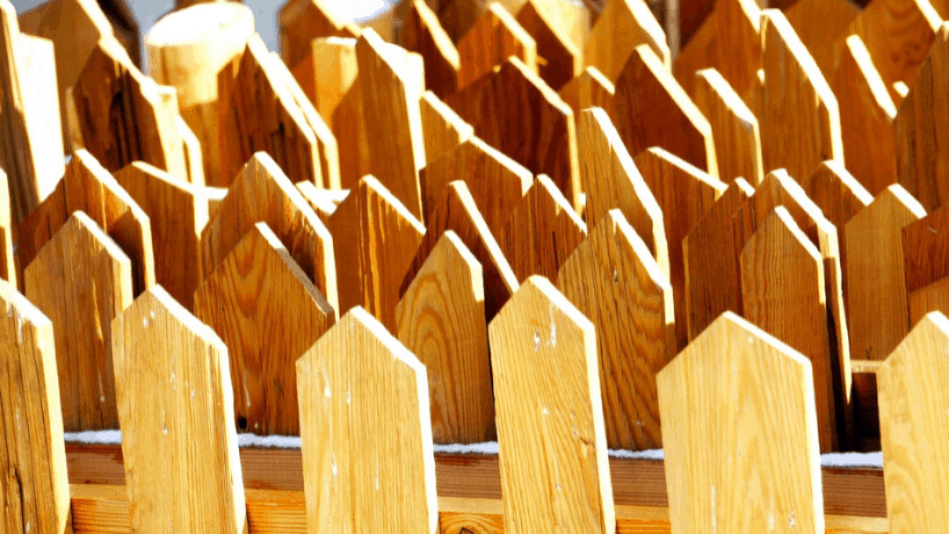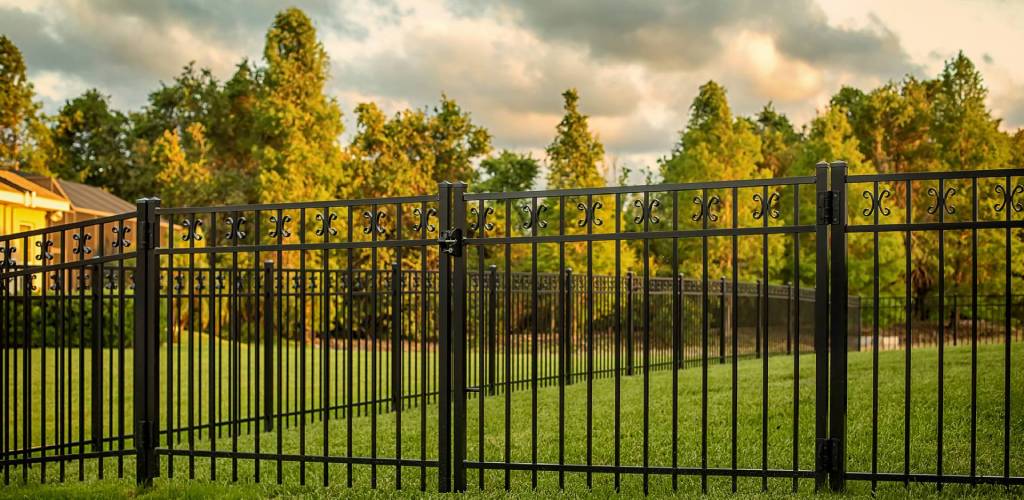All Categories
Featured
When securing your property, choosing the appropriate fencing height is crucial for both personal privacy and safety. The elevation of your fence plays a considerable duty in identifying exactly how effective it will be at safeguarding your home or company from intruders. While a tall fence could appear like the most effective option, the perfect elevation relies on a number of factors, including security needs, neighborhood laws, and the products utilized. Below, we'll describe key considerations to aid you pick the excellent fencing elevation for ideal safety.
![]()
If you live in a community controlled by a homeowners' association (HOA), you must likewise evaluate any particular standards they have for fencing elevation, design, and materials. Following these policies guarantees you stay clear of lawful issues and keep a great relationship with your next-door neighbors.
Taller fences are harder to scale and can significantly decrease the possibility of break-ins. Including functions like sharp tops, barbed wire, or perhaps electrical fencing can further raise the obstacle's safety. A fence that gets to 8 feet or greater is frequently reliable at avoiding most people from conveniently leaping over it.
![]()
Wooden Fences: While wooden fencings offer privacy, they can be easy to climb up, especially if there are no anti-climb functions. For maximum protection, consider a wood fence that's 6 to 8 feet high with sharp tops or trellis expansions that make it tougher to scale. Chain-Link Fences: Chain-link fences are often a lot more resilient and affordable than wood, and they can be constructed to the required elevation for protection. To enhance deterrence, take into consideration including barbed or razor cable on top. These attributes dissuade climbing and make the fence a lot more tough to breach. Wrought Iron Fencings: Wrought iron fencings are often utilized for high-security functions due to the fact that of their toughness and resilience. Their vertical bars make it challenging to climb up, and they can be created to 6 to 8 feet high with added spikes or attractive anti-climb functions to additional secure the border. Plastic Fencings: Vinyl is a superb selection if you need a solid, exclusive fence, but like timber, vinyl fencings may need additional height or safety functions to discourage climbing. Go with a fencing that is at the very least 6 feet high to guarantee privacy and protection. Each product offers various benefits in terms of appearances, durability, and maintenance, so it is necessary to consider your specific requirements and choices when selecting a fencing.
Anti-Climb Attributes: Setting up sharp or pointed tops, trellis expansions, or protection spikes on top of the fencing makes it extra tough for anyone to scale the fence. These features act as a solid deterrent to prospective trespassers. Barbed or Razor Cord: Including barbed wire or razor wire on top of your fencing enhances safety and security dramatically. This is typically used in high-security areas, such as industrial properties, however can likewise be an excellent alternative for property homes in risky areas. Electric Fence: For high-level protection, you might intend to take into consideration adding an electric fencing to your building. Electric secure fencing, when mounted correctly, can develop a strong deterrent while continuing to be relatively very discreet. It delivers a moderate shock to any person that tries to touch or climb the fence. Combining height with these added attributes makes certain that your fencing gives the highest degree of protection.
Balancing the requirement for personal privacy and security while maintaining the visual appeal of your home can assist you pick the ideal elevation and material for your fencing. See to it that your fence matches the total style of your home and does not adversely influence the visual appeal.
![]()
By meticulously thinking about all these components, you can create a protected, personal, and attractive limit around your building that offers both satisfaction and protection.

- Understand Local Rules and Zoning Rules. The very first step in selecting your fencing elevation is to acquaint yourself with local laws. Lots of municipalities have zoning regulations that determine the maximum allowable height for fencings, specifically in front backyards and along property lines. Usually, front backyard fencings are limited to 3 to 4 feet, while backyard fences can be as tall as 6 to 8 feet or even more. Some areas might need a permit for fences over a particular elevation, so it's important to talk to your neighborhood zoning office before beginning building.
If you live in a community controlled by a homeowners' association (HOA), you must likewise evaluate any particular standards they have for fencing elevation, design, and materials. Following these policies guarantees you stay clear of lawful issues and keep a great relationship with your next-door neighbors.
- Determine the Desired Level of Safety. The level of protection you require is a significant variable in identifying the excellent fence elevation. A fencing elevation of 6 to 8 feet is commonly advised for optimal protection.
Taller fences are harder to scale and can significantly decrease the possibility of break-ins. Including functions like sharp tops, barbed wire, or perhaps electrical fencing can further raise the obstacle's safety. A fence that gets to 8 feet or greater is frequently reliable at avoiding most people from conveniently leaping over it.
- Pick the Right Product for Your Fencing. The product of your fence plays an essential function in its ability to give safety. While taller fencings are better for protection, the kind of material you make use of can enhance or impede the performance of the elevation. Right here are some popular fencing materials for safety:

Wooden Fences: While wooden fencings offer privacy, they can be easy to climb up, especially if there are no anti-climb functions. For maximum protection, consider a wood fence that's 6 to 8 feet high with sharp tops or trellis expansions that make it tougher to scale. Chain-Link Fences: Chain-link fences are often a lot more resilient and affordable than wood, and they can be constructed to the required elevation for protection. To enhance deterrence, take into consideration including barbed or razor cable on top. These attributes dissuade climbing and make the fence a lot more tough to breach. Wrought Iron Fencings: Wrought iron fencings are often utilized for high-security functions due to the fact that of their toughness and resilience. Their vertical bars make it challenging to climb up, and they can be created to 6 to 8 feet high with added spikes or attractive anti-climb functions to additional secure the border. Plastic Fencings: Vinyl is a superb selection if you need a solid, exclusive fence, but like timber, vinyl fencings may need additional height or safety functions to discourage climbing. Go with a fencing that is at the very least 6 feet high to guarantee privacy and protection. Each product offers various benefits in terms of appearances, durability, and maintenance, so it is necessary to consider your specific requirements and choices when selecting a fencing.
- Add Security Functions for Bonus Protection. While height is essential, including extra protection features to your fence can increase its effectiveness. Take into consideration the adhering to enhancements:
Anti-Climb Attributes: Setting up sharp or pointed tops, trellis expansions, or protection spikes on top of the fencing makes it extra tough for anyone to scale the fence. These features act as a solid deterrent to prospective trespassers. Barbed or Razor Cord: Including barbed wire or razor wire on top of your fencing enhances safety and security dramatically. This is typically used in high-security areas, such as industrial properties, however can likewise be an excellent alternative for property homes in risky areas. Electric Fence: For high-level protection, you might intend to take into consideration adding an electric fencing to your building. Electric secure fencing, when mounted correctly, can develop a strong deterrent while continuing to be relatively very discreet. It delivers a moderate shock to any person that tries to touch or climb the fence. Combining height with these added attributes makes certain that your fencing gives the highest degree of protection.
- Take Into Consideration Personal Privacy and Aesthetic Preferences. While protection ought to be your key concern, it's likewise important to think about the aesthetic charm of your fencing. High fencings may give protection, but they can in some cases appear enforcing or hostile. If privacy is a worry, a strong wood or vinyl fence can provide both safety and privacy, while a functioned iron fence supplies safety with an open sight.
Balancing the requirement for personal privacy and security while maintaining the visual appeal of your home can assist you pick the ideal elevation and material for your fencing. See to it that your fence matches the total style of your home and does not adversely influence the visual appeal.

- Final Ideas on Fence Height and Protection. Selecting the appropriate fence elevation for optimum protection entails balancing several factors, including neighborhood regulations, the degree of security needed, the material of the fencing, and extra protection attributes. In basic, a fence height of 6 to 8 feet is suitable for the majority of residential buildings, with taller fencings supplying an included layer of protection for high-risk locations.
By meticulously thinking about all these components, you can create a protected, personal, and attractive limit around your building that offers both satisfaction and protection.
Latest Posts
Discover Budget-Friendly Auto Repairs with Montclare’s Exclusive Service Specials
Published May 30, 25
1 min read
Learn About Brake Repair & More: Comprehensive Auto Care Solutions from Montclare Auto Repair
Published May 22, 25
1 min read
Why Routine Vehicle Maintenance at Montclare Auto Repair Saves You Money
Published May 22, 25
1 min read
More
Latest Posts
Discover Budget-Friendly Auto Repairs with Montclare’s Exclusive Service Specials
Published May 30, 25
1 min read
Learn About Brake Repair & More: Comprehensive Auto Care Solutions from Montclare Auto Repair
Published May 22, 25
1 min read
Why Routine Vehicle Maintenance at Montclare Auto Repair Saves You Money
Published May 22, 25
1 min read